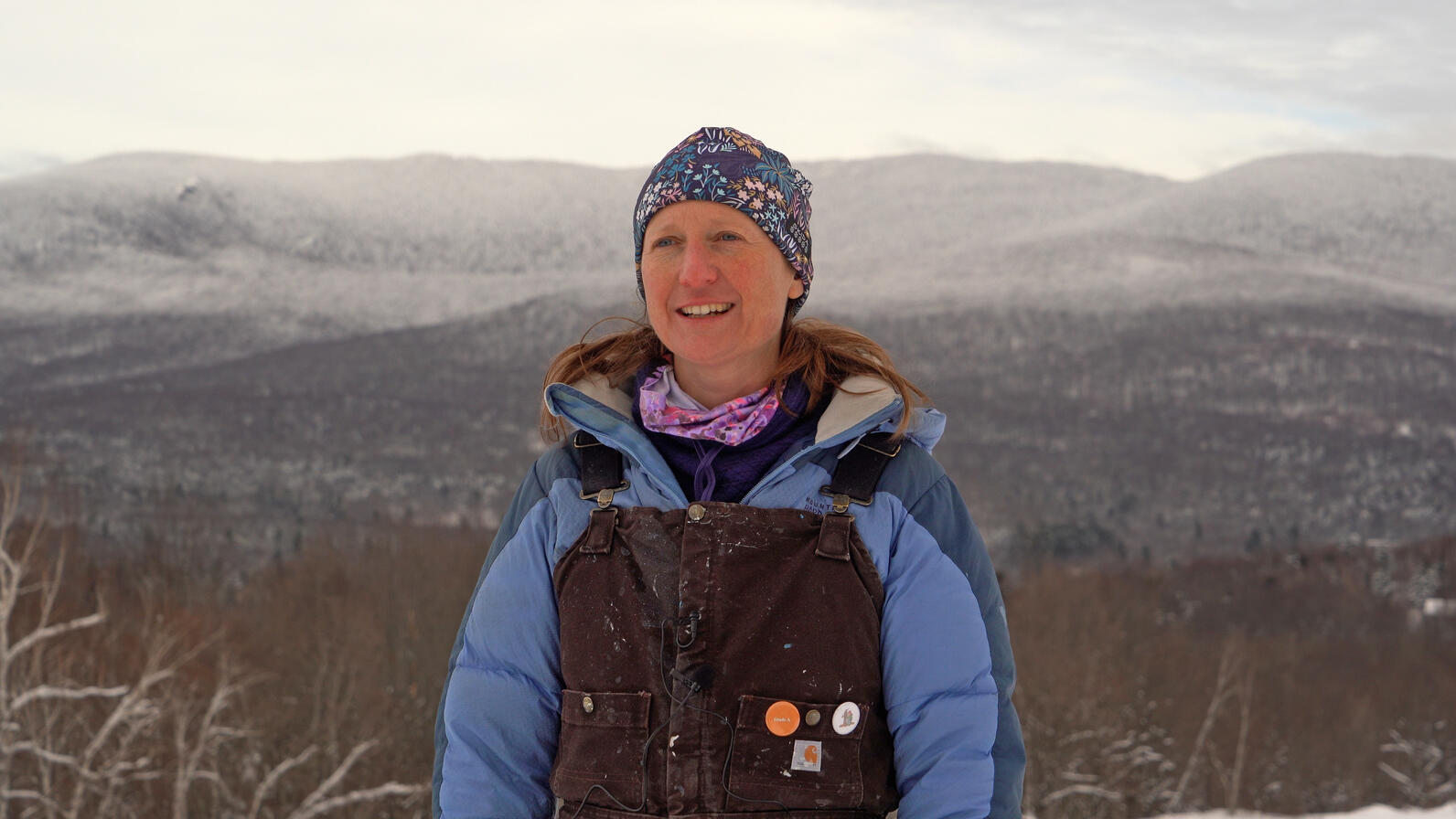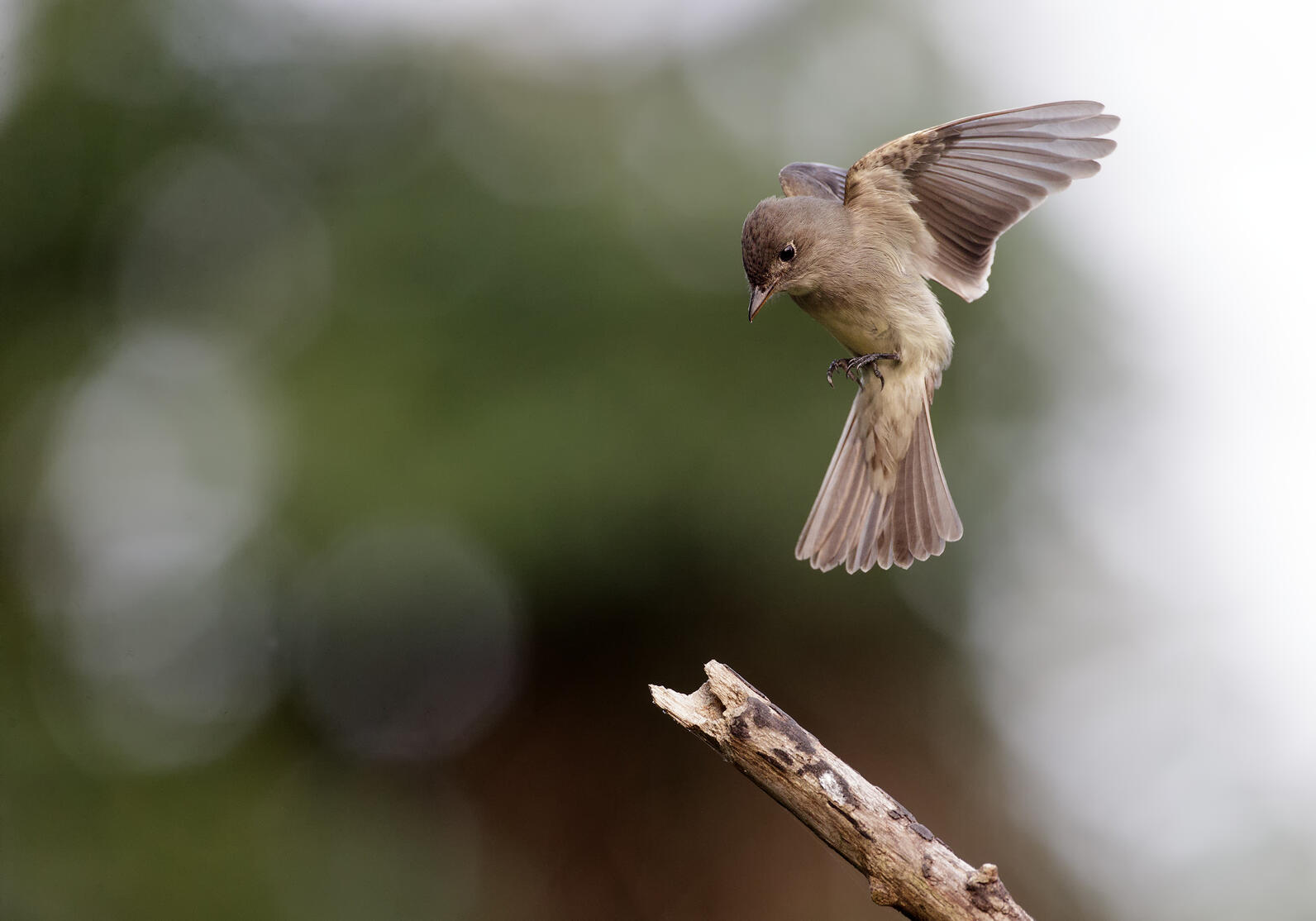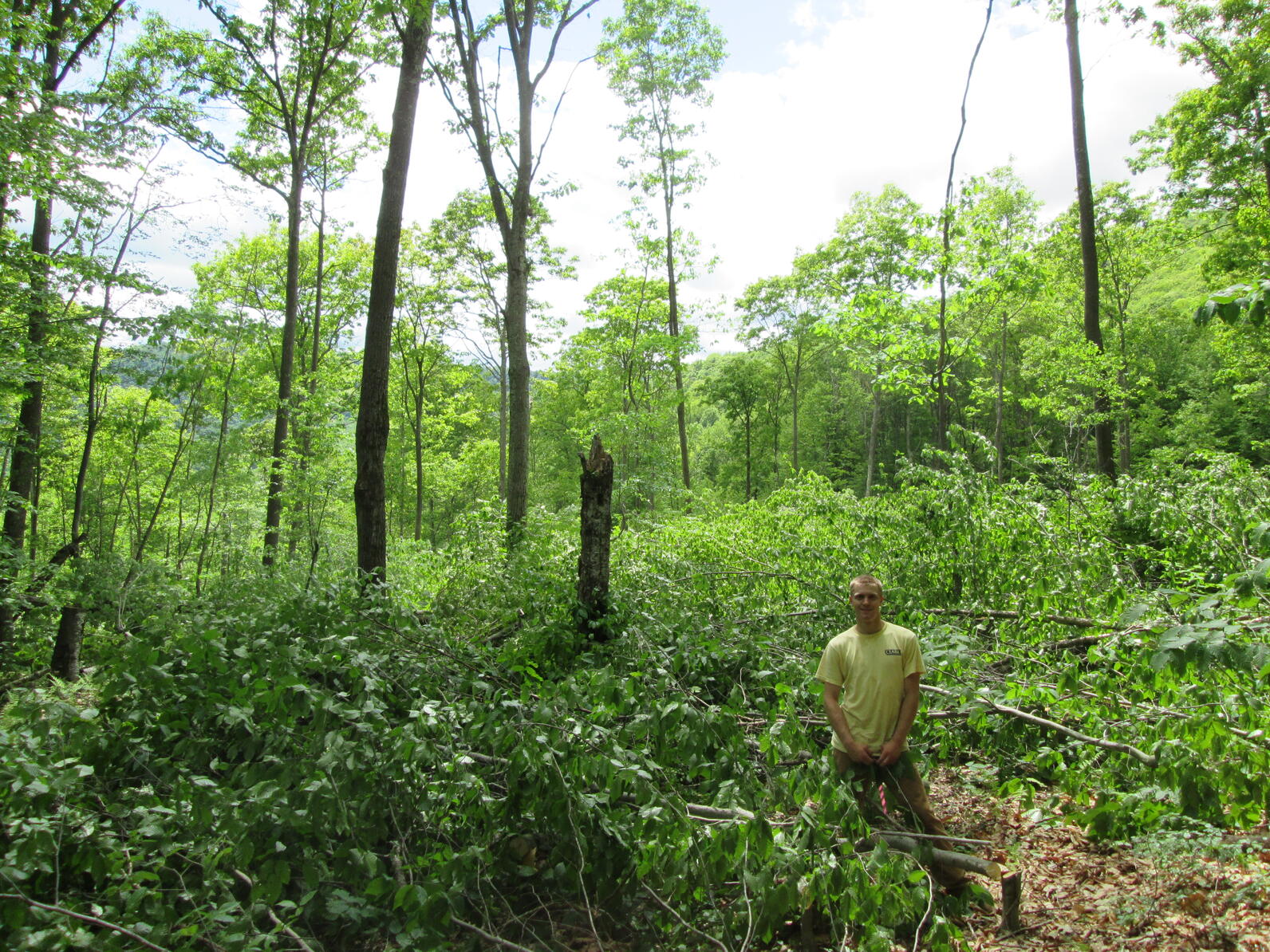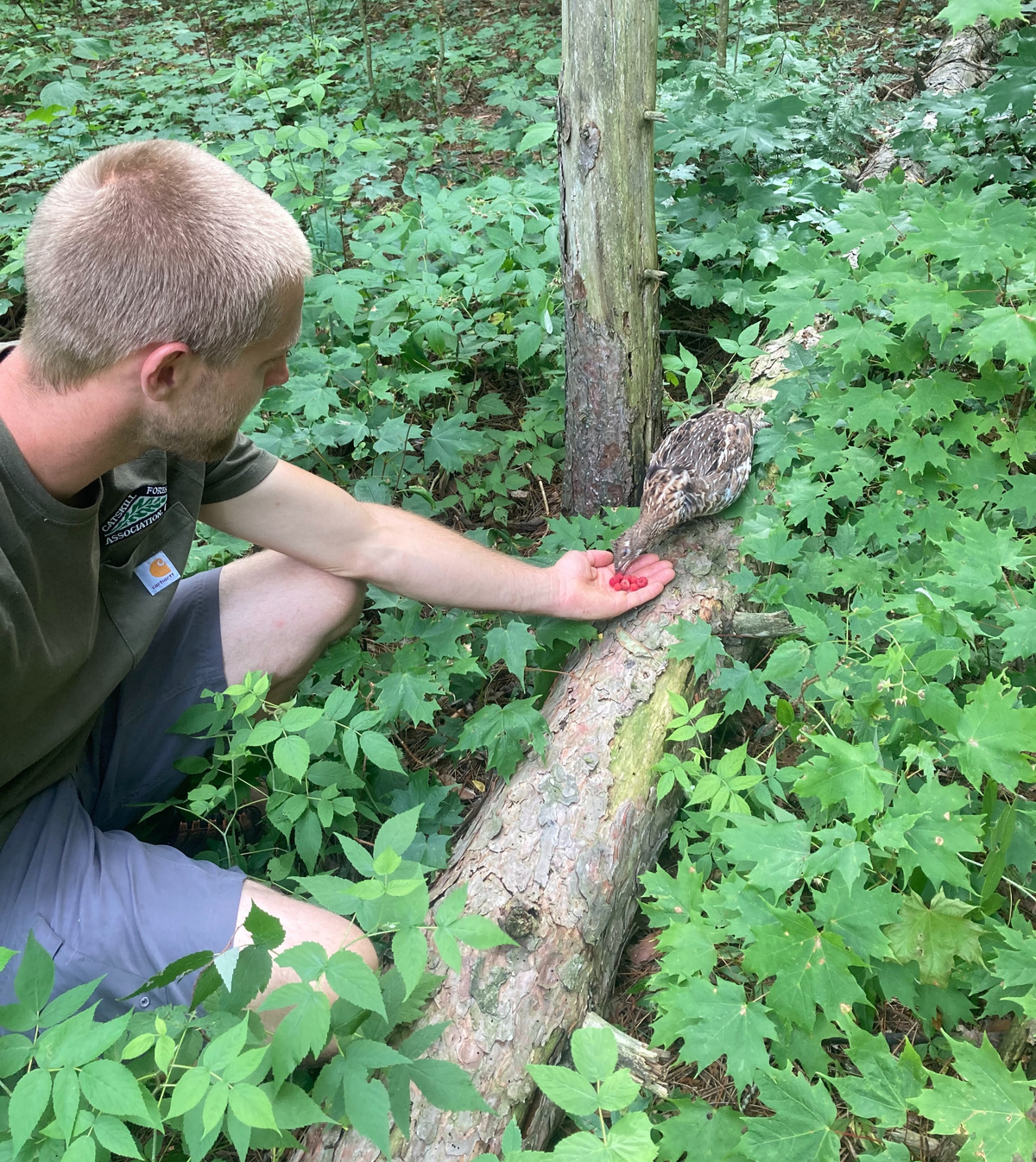Audubon Vermont - in partnership with Audubon’s Connecticut and New York regional office - launched the Audubon Forester Training and Endorsement Program to help create high-quality forest habitat at scale. The program is growing a national network of forestry professionals who, once endorsed, will work together with public and private landowners to prioritize habitat for birds and other wildlife.
Caitlin, a licensed forester with the Vermont Land Trust (VLT), participated in early trainings with Audubon circa 2011, and has loved looking at forestry through a “bird-friendly” lens. In her role, she manages woodlands owned by the land trust, and provides technical assistance to conserved landowners.

When Caitlin began managing VLT’s Jerusalem Skyline property in 2015, she reached out to Audubon Vermont to look at the quality of the bird habitat. Audubon said the understory layer of the woods—vegetation that is up to 5’ tall along with standing dead trees and trees with cavities—could be increased to provide better breeding habitat for rapidly declining songbird species.
Caitlin incorporated Audubon’s recommendations into her plan for the woods. In conducting a timber harvest, Caitlin created several openings, ranging in size from 1/10th to ¾-acres, that brought sunlight to the forest floor. This in turn helped plants regenerate in the understory, creating new places for birds to nest, forage, and seek cover. She asked the loggers to leave the tree tops as intact as possible to protect the young trees from getting eaten by deer. The tree tops also provide cover and nesting sites for songbirds and other wildlife.
Within the first year, Caitlin saw an Eastern Wood-Pewee singing right on the edge of the largest opening, which was created with flycatchers like the pewee in mind. Since then, she has heard or seen Mourning Warblers, Ovenbirds, Wood Thrush, all species which nest and forage in the lower canopy layers.

“All of the properties I manage have multiple conservation goals, and the actions we take are synergistic. Creating healthy habitat for birds adds age diversity, which helps the forest adapt and become more resilient, increasing its ability to respond to climate change. Luckily, there are some options for funding pre-commercial bird-friendly practices through the Natural Resources Conservation Service (NRCS) financial assistance programs or Regenerate New York,” said Caitlin.

In his role with the Catskill Forest Association, John MacNaught focuses on forestry education, habitat management, and connecting landowners with resources, especially when commercial timber sales may not be the right option.
“Most of our membership manages woodlands of 30 acres or less,” explained John, “and while they may not be in the spotlight for large-scale forestry, their property could be hugely important within the context of the hundreds or thousands of surrounding acres. You may have 2,000 acres of mature forest around you and the best thing you can do for birds and other wildlife is regenerate a younger forest on your property. Everyone has different goals and outcomes.”
To get his bird-friendly endorsement, John submitted a management plan to Audubon New York which included ways a landowner could create and improve bird habitat on their property.
“I met with a landowner whose primary interest was recreation and deer hunting. He had kept very detailed records on deer harvests and weights, and realized that local deer harvests and weights were in decline. This led him to wonder if he (and his neighbors) had a habitat problem that was impacting the deer and other wildlife.”
The landowner acknowledged to John that “we also haven’t seen a grouse on the property in ten years, so if you bring them back I’ll consider you a success.”

John helped plan seven small-scale Aspen cuts around one piece of the property, each about two acres or less, and mostly along field edges. Within the first year and with enough sunlight finally hitting the ground, it sprouted back in the thousands of stems per acre. Within one season, saplings were three or four feet tall! “We consider deer an ‘umbrella species,’ meaning when deer habitat is optimized, a suite of other wildlife benefits,” said John. They left coarse woody material from the cuts on the ground to prevent deer from reaching and browsing all seedlings and saplings, which in turn created camouflaged and hidden nesting sites.
“This spring, I heard grouse drumming in the woods all morning long!” said John.
Are you a forest owner actively managing your land within a priority forest area? Vermont-based landowners can fill out this form or click here to fill out the New York Landowners Assistance Form! Our forest staff will do our best to get back to you in 2-3 weeks.






